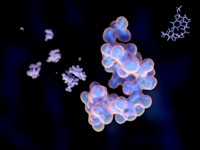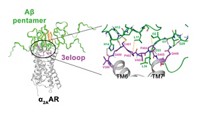Advertisement
Grab your lab coat. Let's get started
Welcome!
Welcome!
Create an account below to get 6 C&EN articles per month, receive newsletters and more - all free.
It seems this is your first time logging in online. Please enter the following information to continue.
As an ACS member you automatically get access to this site. All we need is few more details to create your reading experience.
Not you? Sign in with a different account.
Not you? Sign in with a different account.
ERROR 1
ERROR 1
ERROR 2
ERROR 2
ERROR 2
ERROR 2
ERROR 2
Password and Confirm password must match.
If you have an ACS member number, please enter it here so we can link this account to your membership. (optional)
ERROR 2
ACS values your privacy. By submitting your information, you are gaining access to C&EN and subscribing to our weekly newsletter. We use the information you provide to make your reading experience better, and we will never sell your data to third party members.
Biological Chemistry
Sniffing Out Ketamine’s Targets In The Brain
Neurochemistry: Researchers demonstrate that the general anesthetic activates mouse olfactory receptors
by Michael Torrice
April 13, 2015
| A version of this story appeared in
Volume 93, Issue 15
Doctors have used general anesthetics in the operating room for more than 150 years, yet neuroscientists don’t know much about how these drugs knock out patients. Roderic G. Eckenhoff of the University of Pennsylvania and colleagues now report that the anesthetic ketamine binds to and activates olfactory receptors in mouse brains, suggesting the receptors may be targets for new anesthetics. The finding also could help researchers uncover other ketamine-binding proteins in the central nervous system, possibly leading to the discovery of additional anesthetic targets. Besides detecting odorant molecules in the nose, olfactory receptors are linked to signaling in other cells. Eckenhoff’s team found three mouse olfactory receptors in the brain that bind ketamine but not other general anesthetics. Using these receptors’ amino acid sequences and structures of related receptors, the researchers built a model of the ketamine binding site (Sci. Signal. 2015, DOI: 10.1126/scisignal.2005912). They confirmed their model by mutating ketamine-binding receptors and nonresponsive receptors to eliminate and introduce, respectively, the ability to bind the drug. With this binding motif in hand, Eckenhoff hopes to search protein structure databases to find novel ketamine receptors.




Join the conversation
Contact the reporter
Submit a Letter to the Editor for publication
Engage with us on Twitter